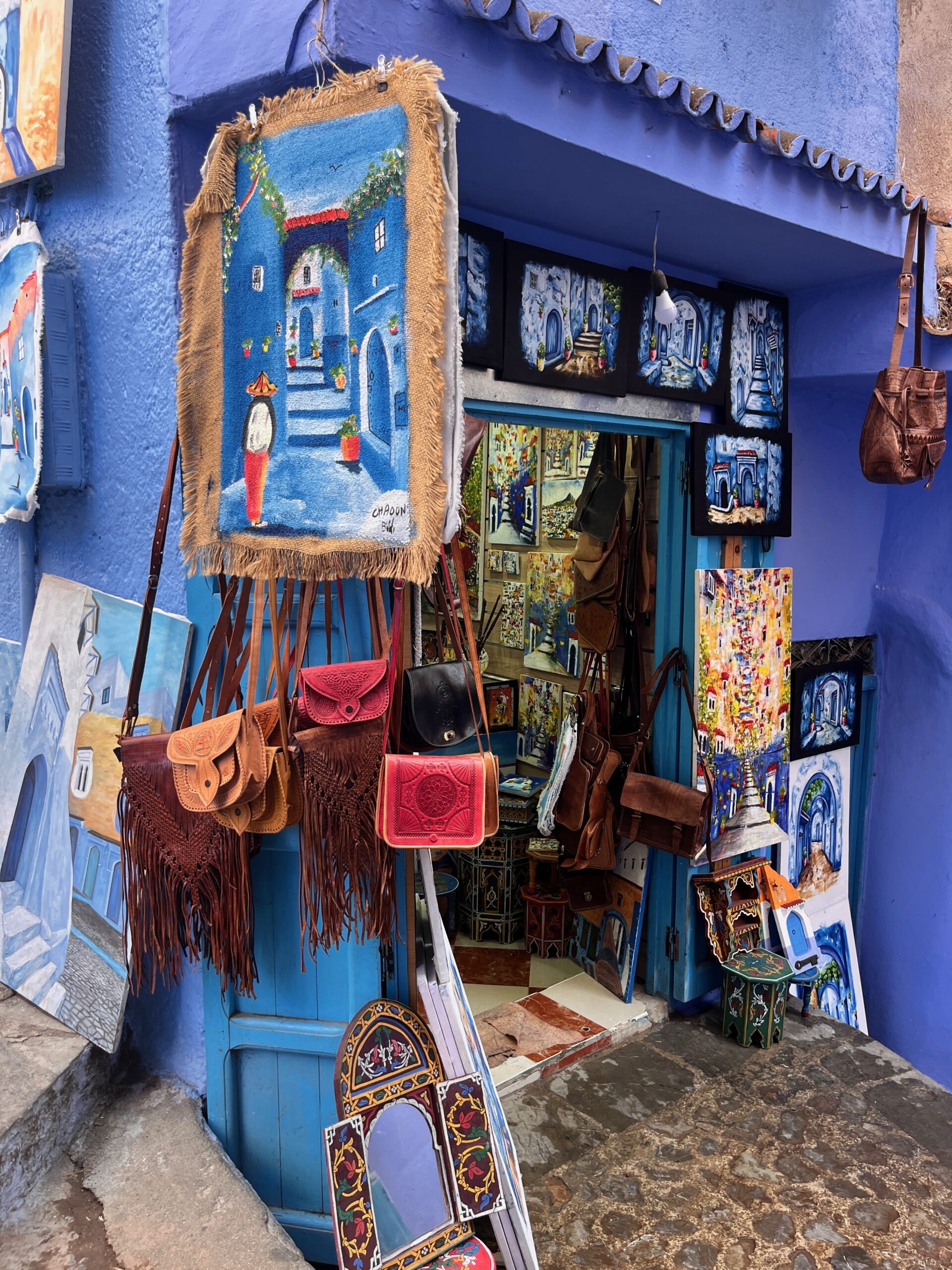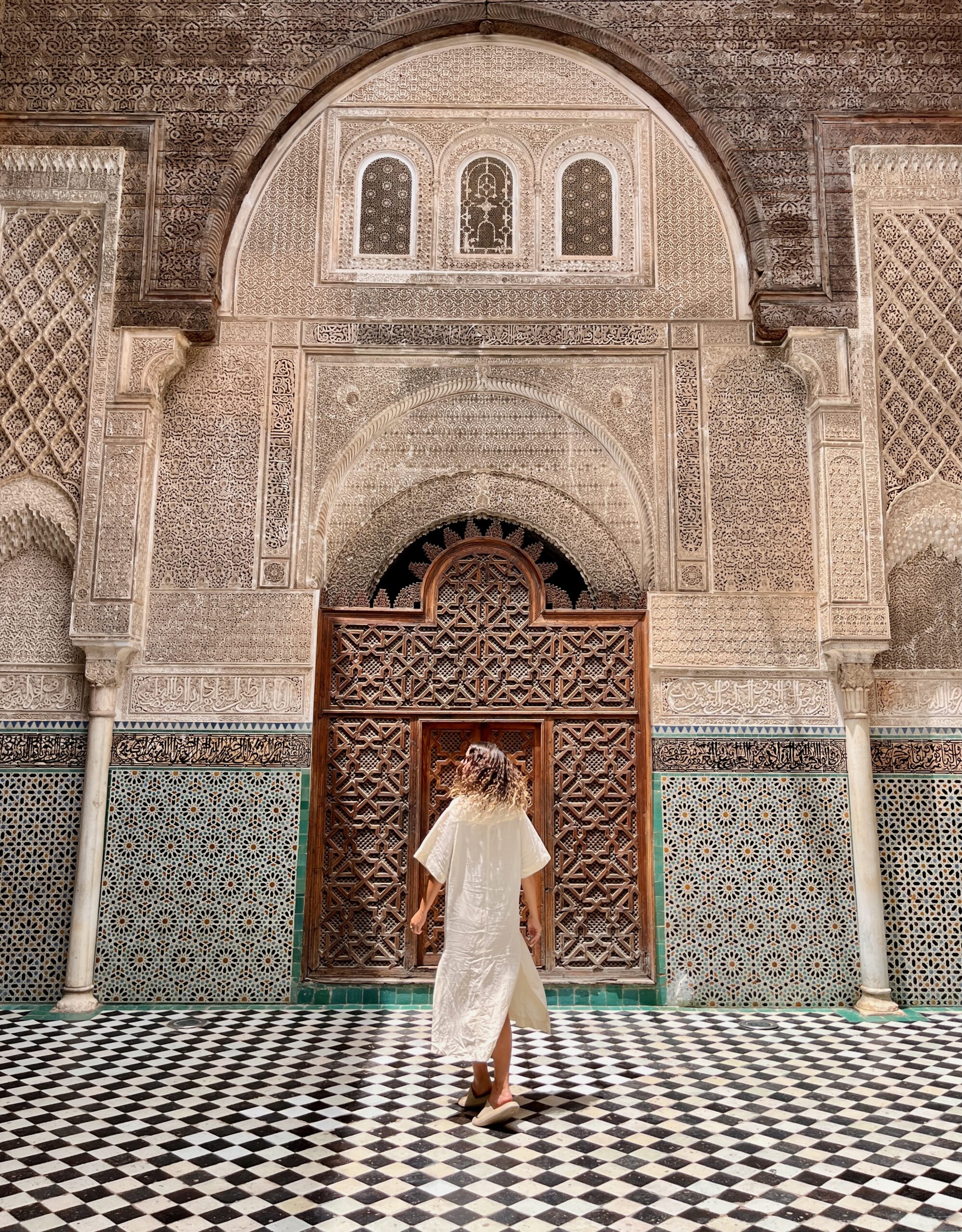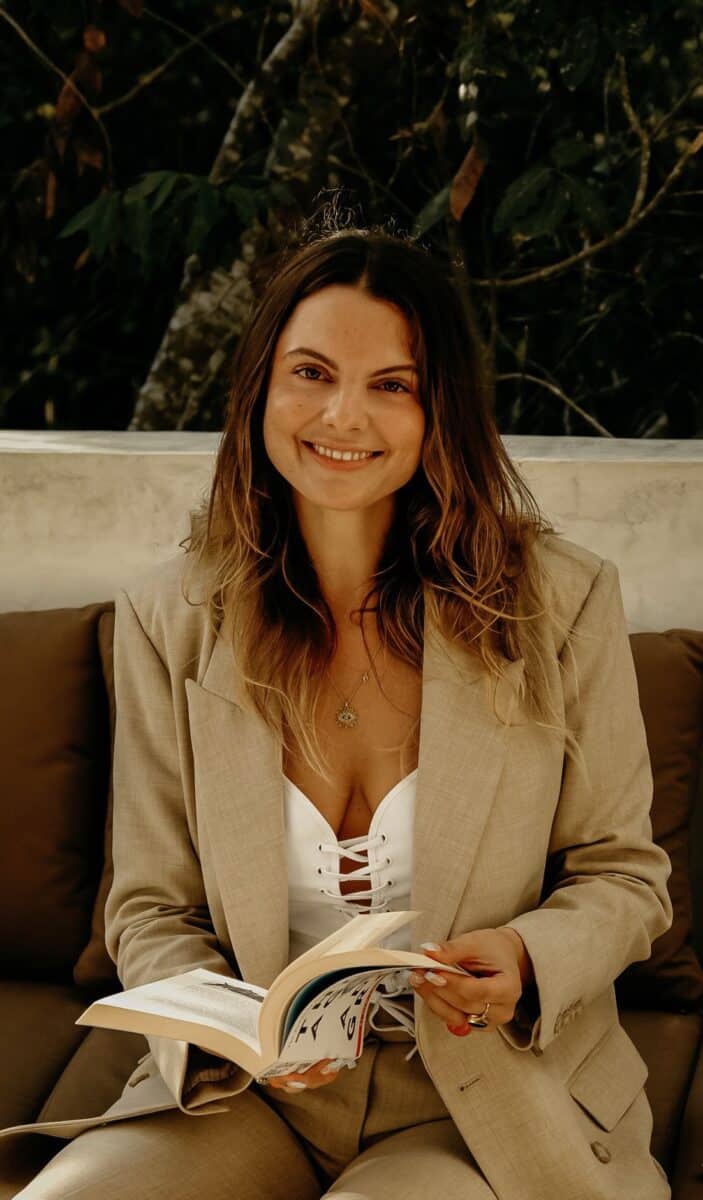Morocco Travel Guide
Our extraordinary experience in Morocco
I had the joy of travelling through Morocco on several occasions, covering the North and South of the country. Its culture is rich and vibrant, its cuisine is absolutely delicious, its people are welcoming and attentive, and its history is just as fascinating as its architecture is impressive. If you’re looking to see the most breathtaking sites of Morocco, look no further, this guide is for you!
From the iconic medina of Marrakech to the charming mountain village of Chefchaouen (nicknames the Blue City for its colourful walls), this guide will take you on an adventure throughout the jewel of the Maghreb. Whether you like to relax in nature or you enjoy the bustling atmosphere of a souk, you’ll find something that piques your interest in this collection of the most stunning places to visit in Morocco.
Buckle up, because the ride is guaranteed to be spectacular!
Table of Contents
Where is Morocco?
Morocco is situated in North Africa and is known for its remarkably rich history (soooo many things date back to the Berber and Islamic empires!), with diverse cultures (including many distinct dialects) and breathtaking landscapes. Nestled along the pristine coastline of both the Atlantic Ocean and the Mediterranean Sea, Morocco features an array of world-renowned cities like Marrakech and Fez, each offering a unique blend of ancient medinas, stunning architecture, and vibrant souks. It borders Algeria to the east and southeast and Western Sahara to the south. It has several key mountain ranges: the Rif and the Atlas, which are respectively known for their lush greenery and towering peaks. In general, the North of the country is more cosmopolitan and organised, with more developed infrastructure and slightly higher prices. In the South, it’s more traditional and bustling, with less developed infrastructure but also more affordable prices. An exception to this rule is the city of Marrakech, in the south of Morocco, famous for its luxurious atmosphere and world-class entertainment.
About Morocco
Morocco is part of Northern Africa, the Atlantic Coast, and the Mediterranean Sea Basin
About this Guide
Throughout my adventures in Morocco, I have traveled to more than 10 villages and cities, including: Marrakech, Casablanca, Rabat, Chefchaouen, and Fez. I have had the luck of travelling the country with locals, which gave me valuable insights into the country’s culture.
Many destinations in Morocco have become popular tourist attractions, which not only inflates prices but also makes its a simply less enjoyable experience. Being able to immerse yourself in the environment, the sounds of nature, and the authenticity of a place always do create unique memories and learning opportunities. This guide focuses on authentic and accessible experience for anyone curious to live the original Moroccan nomad lifestyle.
When to go to Morocco?
It is possible to visit Morocco all year round. However, depending on your budget and your tolerance of high temperatures, you may want to choose the timing of your stay strategically.
Spring (April – June)
Spring, from April to June, is known to be the most beautiful time to visit Morocco, from its deserts in the South to the mountains in the North. The temperatures vary from around 30 degrees celsius in Marrakech to around 20 degrees celsius in Chefchaouen. The perfect in-between!
Summer (July – September)
The summer offers warmer and busier times throughout the country, with temperatures reaching 40 degrees celsius in the South of the country. If you aren’t afraid of heat, this may be the best time to experience the real nomad lifestyle of the country.
Autumn (October – November)
Alternatively, autumn, from September to November, offers a wonderful off-season option to visit the country, with temperatures similar to the Spring month but a much more quiet tourism.
Winter (December – March)
The North of the country will offer fresh temperatures around 10-15 degrees celsius in the mountains and pleasant temperatures in the South, around 20-25 degrees celsius. This is the best time to visit Morocco if you don’t tolerate heat that much.
The ancient city of Volubilis
Where to stay in Morocco?
When planning your stay in Morocco, consider the charm and uniqueness of riads. Riads are traditional Moroccan houses or palaces with an interior garden or courtyard, often found in the medinas of cities like Marrakech and Fez. These enchanting structures, usually featuring intricate tilework, lush plants, and tranquil fountains, offer a unique and authentic lodging experience. Staying in a riad allows travelers to immerse themselves in Moroccan culture and history. Their design, with their inward-facing architecture, provides an oasis of calm and privacy, shielding guests from the bustling streets outside.
Many riads have been meticulously restored and converted into boutique hotels, offering modern amenities while retaining their historical charm. Guests can enjoy personalized service, as riads typically have fewer rooms compared to conventional hotels, ensuring a more intimate and attentive experience. Moreover, waking up to the aroma of fresh mint tea and traditional Moroccan breakfasts served in a serene courtyard enhances the overall travel experience.
For those looking to truly connect with the essence of Morocco, riads offer the best type of accommodation, blending comfort, authenticity, and a touch of luxury in a setting that reflects the country’s rich heritage.
How to get around Morocco?
Getting around Morocco is quite easy and cheap, with various transportation options to suit your preferences and budget. For convenient and cost-effective travel between cities, private transport (taxis and shuttles) is an excellent choice. For recommendations about which taxi services to use, always ask your hotel for a reliable number or to contact a driver themselves. This will save you money and time and guarantee the best local service.
If you prefer the freedom to explore at your own pace, car rentals from companies like Hertz, Avis, or Europcar are readily available, with prices ranging from €20 to €80 per day, depending on the car type and rental duration. I highly recommend using a comparative tool such as SkyScanner, which will provide you with the best rates for the car and trip of your choice.
Keep in mind that driving in Morocco can be challenging, especially in cities with dense traffic such as Marrakech, Casablanca, and Rabat. In addition, if you are planning to explore mountain villages such as Chefchaouen, many roads are dirty and steep. For these reasons, I recommend renting an SUV car such as the Dacia Duster, which is the one we used for our road trip and was perfect to get through any type of terrain in great comfort and safety.
Parking fees vary but are generally inexpensive and offer you the safety of 24-hour watch. Payment is usually collected upfront by local guardians who will approach you as you enter a parking zone.
How to get to Tulum?
Practical Tips for Morocco
Scams
Morocco is a country of traders and negotiators. Its people are famous for running scams of all types, so be on alert at all times. If someone approaches you in the street to invite you to visit a restaurant or cultural site, it is most probably a scam (they are just attracting you to a place where they earn commissions). In general, if a stranger approaches you in a touristic area, even within the airport, it’s very probably a scam. Always ask your hotel for recommendations of local services such as drivers and currency exchanges. Following those tips, we were able to avoid any scam in Morocco.
What should I bring with me?
Negotiation
Negotiation is part of the culture of Morocco. When prices are indicated, they’re usually fixed, but when they aren’t there is a lot of room for manoeuvre. You’ll have to ask the vendor for a price and it will help to know a few words in Moroccan, French, or even Spanish, to build a good rapport. You can usually negotiate prices from two to ten times cheaper then the first price you receive from the vendor. Don’t be afraid to walk away because many items are available in different places. Be also mindful of recognising authentic local crafts from imported products. Again, ask your hotel for recommendations.
Safety
Beyond scams, Morocco is generally safe. Just like everywhere, you should pay attention to your belongings, especially in busy and touristy streets, and avoid walking late at night in isolated areas. Be particularly cautious if you are a solo female traveler. Avoid catching attention and be respectful of the local culture by covering your body with modest garments.
How safe is Tulum?
Food
Moroccan cuisine is a vibrant mix of flavors and spices, featuring dishes like tagine, couscous, and pastilla. Street food, such as kebabs and msemen, offers a delicious, quick bite. For a safe culinary adventure, drink bottled water and eat at busy, well-reviewed stalls and restaurants. Don’t miss trying mint tea and traditional sweets like baklava. Embrace local markets for fresh produce and spices, but ensure meat and seafood are cooked thoroughly.
Clothing
As mentioned previously, if you are a woman, I recommend respecting the country’s culture and dressing modestly in public: cover your legs, arms, shoulders, and chest. Avoid eye-catchy clothing. This will save you a lot of stares and attract more respectful behaviour from locals. Within your hotel or private accommodation, of course, anything goes and feel free to dress as you please. If you travel to Morocco during the summer, make sure to have breathable and light clothing such as cotton and linen: it gets very hot!
What to do in Morocco?
Have a look at the posts below for plenty of ideas and inspiration for your trip to Morocco. My recommendations focus on authentic and affordable experiences, and are 100% based on my genuine opinion. I may make a small commission out of affiliate links (without changing the price for you).

Road Trip in Morocco: Classics and Hidden Treasures
Discover the best kept secrets of Morocco in this itinerary across the most beautiful sites across the country, from Marrakech to Fes!

What to Do in Fes, Morocco’s Cultural Capital
Fes is the most spectacular city in Morocco. In this post, I uncover the best kept secrets of the largest pedestrian area in the world.

Hi! I’m Sophie
I was born in Belgium, educated in Europe, and now exploring the world with the objective to understand how we can make it a better place.
I currently work as a doctoral researcher (PhD candidate) in The Hague. I hold a Masters degree (MPhil) from the University of Oxford and have 7+ years of experience as a consultant in public diplomacy, strategic communication, and global peace and security.
I believe travel can be an experience for personal growth and transformative connections.
